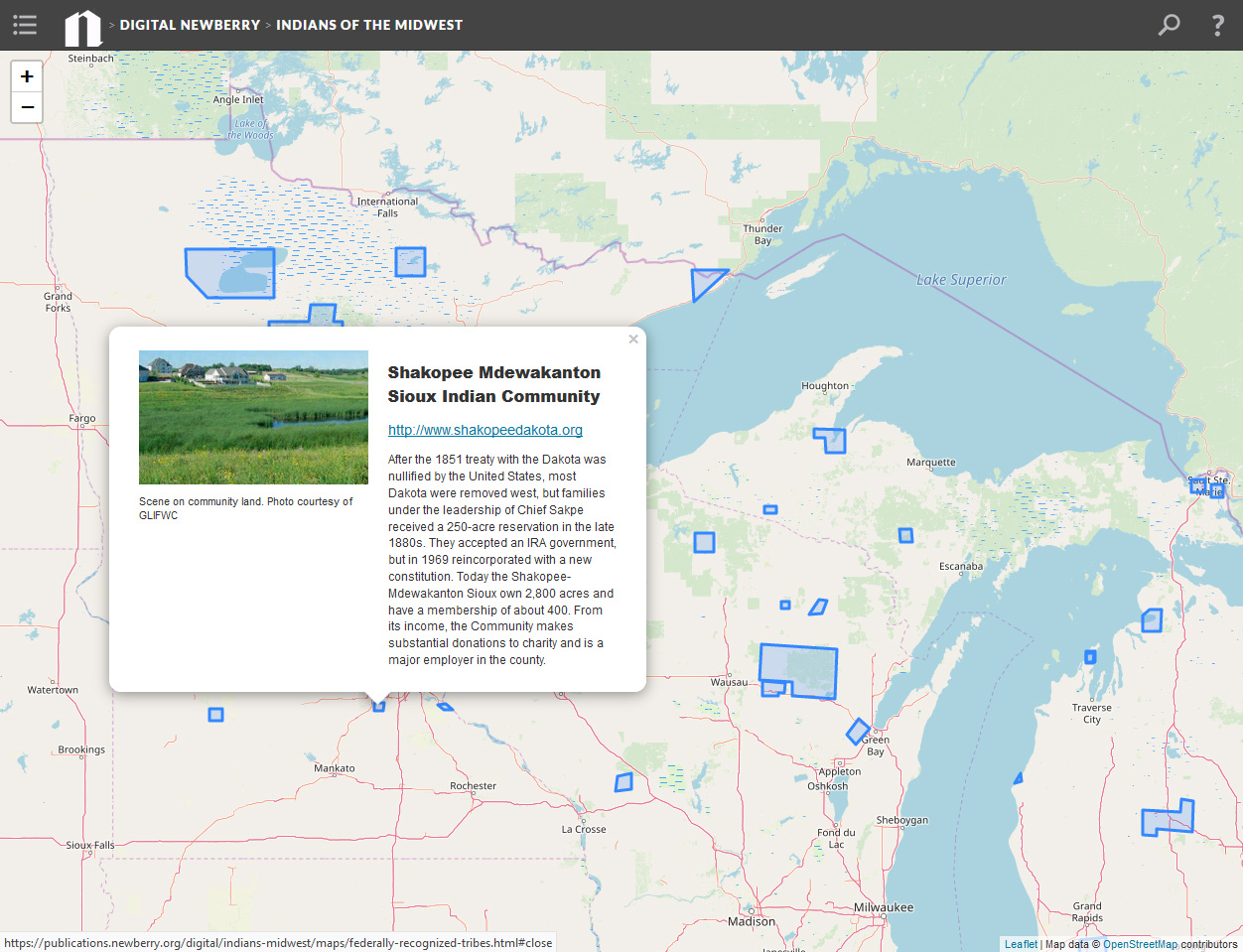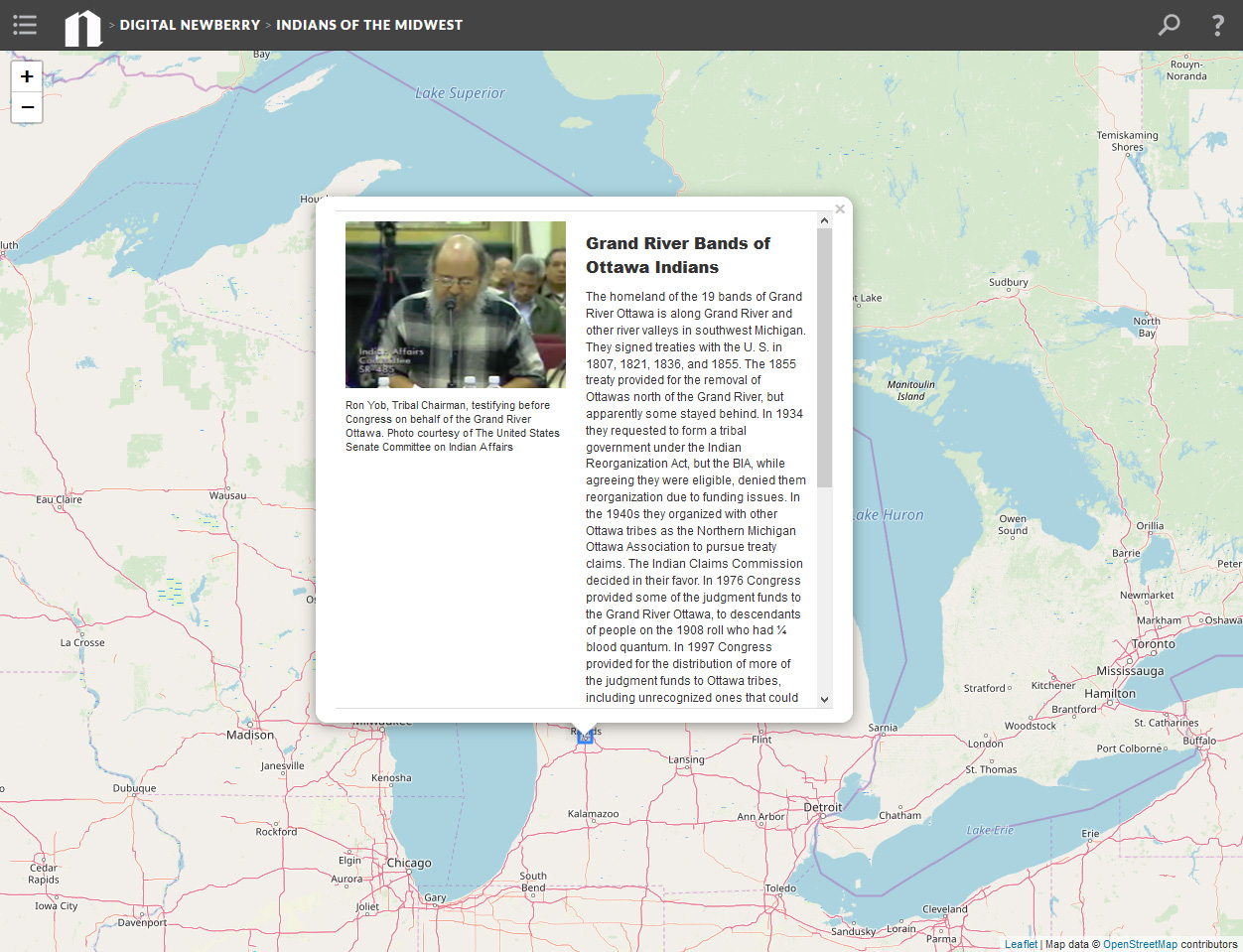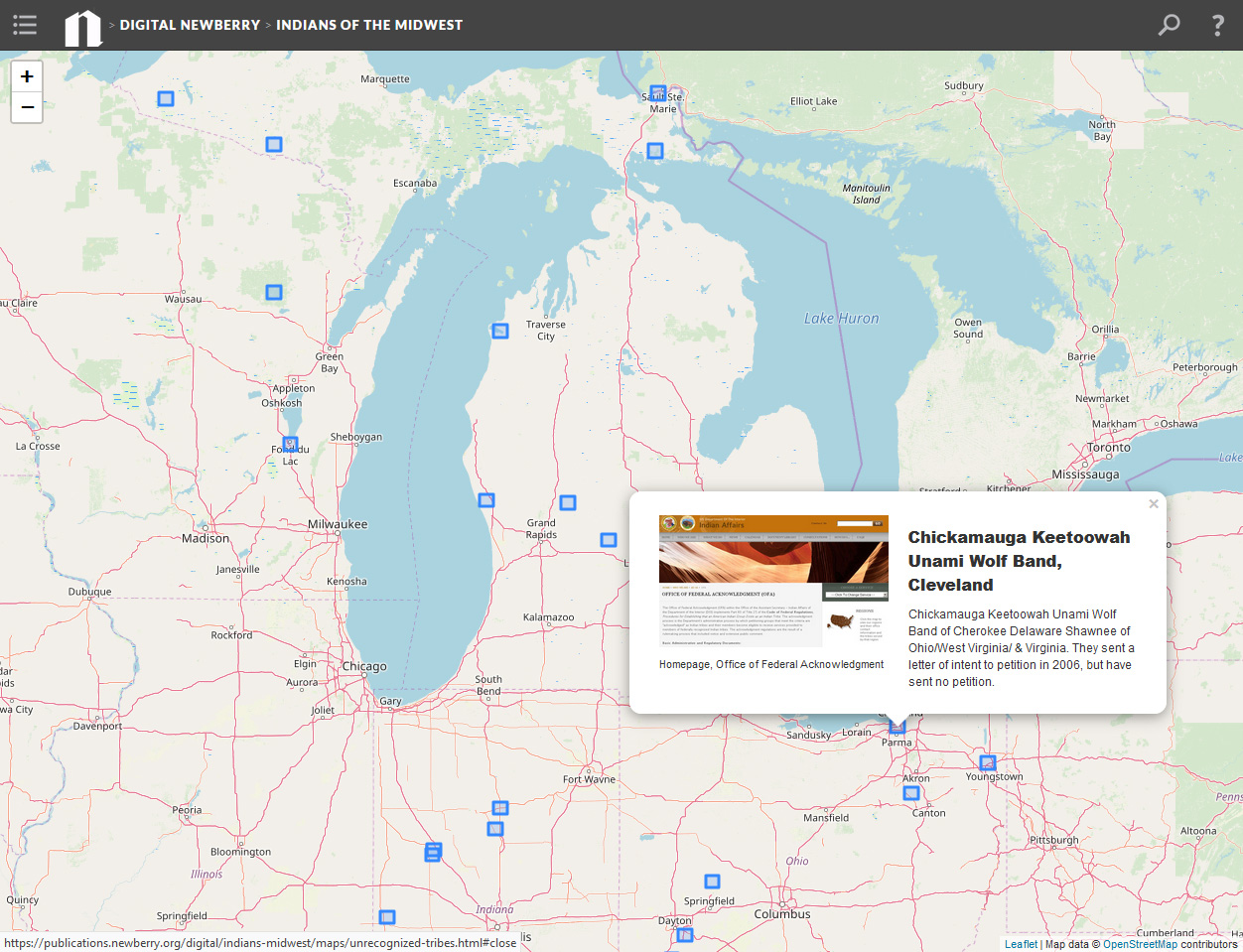Federal and State Recognition
From the time of the establishment of the United States to 1871, the federal government recognized tribes when they signed treaties with them. The U. S. acknowledged that the group that was party to the treaty was a tribe and that the tribe was entitled to protection and support in the form of economic, educational, and medical aid in return for the tribe’s concessions to the U. S. Tribes usually were assigned land, the title to which was held “in trust” by the U. S. (making the land not taxable), and a federal supervisor or “Indian Agent.” All the Minnesota tribes, most of the tribes in Wisconsin, and some of the tribes in Michigan were acknowledged in this way.
After 1871, Congress or the secretary of the interior could recognize tribes, but generally were not interested in doing so, because the goal was to destroy tribes and remove tribal land from trust status. In 1913 Congress did recognize the small Hannahville Potawatomi tribe in Michigan and the Forest County Potawatomi in Wisconsin.
By 1934, a reform movement succeeded in reversing the detribalization policy. The Indian Reorganization Act promoted tribalism and tribal government by acknowledging a government-to-government relationship between the U. S. and tribes that agreed to organize under the provisions of the IRA. Two Ojibwa communities in Wisconsin organized under the IRA and gained federal recognition as tribes: St. Croix and Sokaogan. Reorganization meant constitutional government and an official membership roll that became the base roll for many IRA tribes. But budgetary problems led the federal government to resist extending the right to organize to many of the Native communities in Michigan. The government especially ignored tribes without reservations. There also was pressure to introduce blood quantum requirements for membership in IRA tribes.
Indian activism in the late 1960s and 1970s, including pressure from “unrecognized tribes” who demanded an end to “second class status,” resulted in more tribes obtaining recognition from Congress or the secretary of the interior. The Sault Ste. Marie Ojibwa in Michigan obtained recognition from the secretary in 1972.
Congress has the constitutional authority to recognize tribes. An unrecognized tribe can work to convince a member of Congress to sponsor legislation to acknowledge its tribal status. This congressional process is expensive. Tribes have to lobby, travel to Washington, and mount a media campaign in their home state. Even if Congress passes the desired legislation, the President may veto it. Appealing to Congress is frustrating for tribes, not only because of the expense, but also because the basis for recognition is politicized and subjective. Four Michigan tribes received federal recognition from Congress in the late 1980s and 1990s: Lac Vieux Desert Ojibwa, Pokagon Potawatomi, Little Traverse Bay Ottawa, and Little River Ottawa.
Listen to John Low discuss how his Pokagon Potawatomi tribe obtained federal recognition in 1994
In 1978 Congress gave the Department of the Interior the responsibility for responding to a surge in requests for recognition and the Department opened a special office, the Branch of Acknowledgement Research (BAR), to process requests. Unrecognized tribes had to send a letter of intent from an organized group (not an individual), then a formal petition documenting that the tribe met certain criteria. Petitioning tribes spent an average of ten years collecting data and hiring experts at a cost of from $50,000 to one million dollars. Obviously, poor groups were at a disadvantage. The funding for this came largely from charitable organizations, especially churches. The BAR staff (anthropologists, historians, and genealogists) took six to ten years to respond. Petitions that were recommended for rejection could be appealed to the Department of the Interior and then to federal court.
What were the criteria unrecognized tribes had to meet as of 1994? First, the applicant group had to show that it was continually identified as an Indian community since 1900. Second, since 1900, half the members of the group had to have continually existed as a distinct Indian community in an area they historically inhabited. Third, the group had to have had a system of political authority over members from historical times to the present. Fourth and fifth, the group needed a governing document that indicated criteria for membership and a membership list that showed members descended from a historically recognized tribe (for example, documented by marriage licenses, censuses, and wills). The members could not belong to other tribes or have been terminated by Congress.
Since 1978, the BAR has received 250 letters of intent (many from groups that had petitioned Congress in prior years) and 55 petitions. Between 1978-2000, 33 petitions were processed and 15 of these tribes recognized. In Michigan, the Grand Traverse Bay Ottawa and Ojibwa obtained recognition in 1980; the Huron Potawatomi, in 1995; and the Gun Lake Potawatomi, in 1999. After 2000, the work at BAR all but ceased as the recognition process became politically unpopular. One of the factors working against the recognition process was the lack of funding to provide more tribes with the services to which they would be entitled.
Some unrecognized tribes have petitioned states for “recognition” in recent years. They are at a disadvantage without federal recognition, but state recognition has some advantages. Members who sell art are covered by the protections of the Indian Arts and Crafts Act of 1990. They may obtain access to some federal funding. For example, in 2002 the Administration for Native Americans under HHS gave grants to state recognized tribes. But a major motivation for tribes without federal recognition to seek recognition from their home state is to obtain respect for their heritage. The criteria for recognition varies from state to state. Michigan has “unofficially” recognized three tribes and Ohio, one. Federally recognized tribes generally oppose state recognition because they argue that this act weakens the nation-to-nation principle they have fought so hard to protect. Also, state recognized tribes potentially could share in the scarce resources available to tribes.
Thirty groups in the Midwest have so far been unsuccessful in obtaining federal recognition. Many Native people residing in or associated with these communities have retained a sense of group identity and an emotional connection with their homeland.
The Indian Agent, 1857
Indian Agent, Charles H. Mix (left), with Winnebago chief Baptiste and a merchant who supplied goods to the agency, had considerable power over the Indians he supervised and ideally protected. The agent distributed treaty payments and goods and could withhold them from “uncooperative” individuals. He also kept a list of persons entitled to these goods or annuities. The agent was supposed to assist and encourage farming and other “civilized” activities. Photo courtesy of Minnesota Historical Society.
President Bill Clinton Signs a Law Giving Federal Recognition to the Pokagon Potawatomi Tribe
Photo courtesy of the William J. Clinton Presidential Library.


